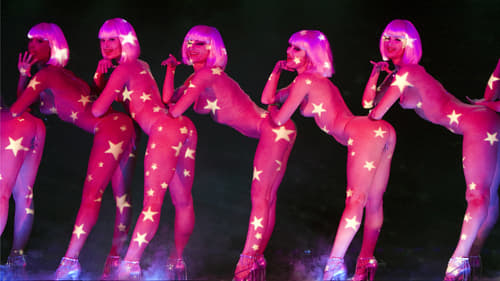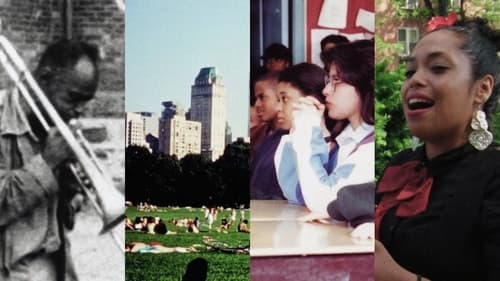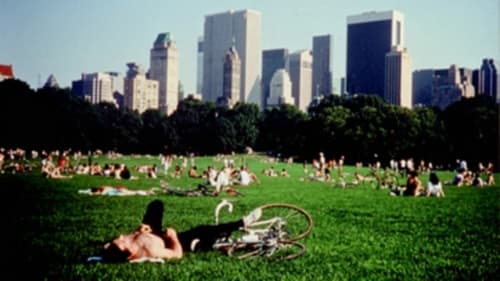
Director of Photography
Рассказ о непростых отношениях Льва Толстого и его жены Софьи Толстой.

Director of Photography
В центре сюжета западное фермерское поселение Монровия с населением от 1063 до 1400 жителей. Фильм исследует важность деревенской Америки как определяющего центра американских ценностей.

Director of Photography
Документальный фильм о том, как культурно-демографический институт поддерживает свою традиционную деятельность и адаптируется к цифровой революции.

Cinematography
Legendary documentary filmmaker Frederick Wiseman (At Berkeley, National Gallery) explores the culture, politics and daily life of the Queens, NYC district of Jackson Heights, which lays claim to being the most diverse neighbourhood in the world.

Director of Photography
A portrait of the day-to-day operations of the National Gallery of London, that reveals the role of the employees and the experiences of the Gallery's visitors. The film portrays the role of the curators and conservators; the education, scientific, and conservation departments; and the audience of all kinds of people who come to experience it.

Director of Photography
Direct cinema pioneer Frederick Wiseman takes an in-depth look at the preeminent American university during a fall semester that saw a vigorous debate taking place over tuition hikes, budget cuts, and the future of higher education in the United States.

Director of Photography
Crazy Horse (фр. Le Crazy Horse de Paris — дикая, необъезженная лошадь) — знаменитое парижское кабаре, основанное в 1951 году.

Director of Photography
Explores the world of a boxing gym in Austin, Texas, dwelling on the discipline of training as people from all walks of life aspire to reach their personal best.

Director of Photography
STATE LEGISLATURE shows the day-to-day activities of the Idaho Legislature during an entire session. Lobbyists, lawmakers and their constituents are seen debating and discussing the concerns of the electorate, on issues that range from violence in schools, mad cow disease and video voyeurism to illegal immigration, secondhand smoke and the deregulation of telephone rates. The film is an example of the achievements, values, constraints and limitations of the democratic process.

Director of Photography
The opening scene in this film is of an arrest in Hillsborough County Florida where a woman has scratched her husband while he was trying to restrain her from getting back in her car and leaving after an argument. The officers explain that she has committed a battery and thereby earned herself an inescapable arrest and overnight stay in jail because by law they have no discretion. This sets the stage for two hours of court proceedings before three different judges, each trying to apply the Florida domestic violence laws.

Cinematography
DOMESTIC VIOLENCE shows the Tampa, Florida police responding to domestic violence calls and the work of The Spring, the principal shelter in Tampa for women and children. Sequences with the police include police response, intervention, and attempted resolution of domestic violence calls. Sequences at the shelter include intake interviews, individual counseling sessions, anger management training, group therapy, staff meetings, conversations among clients and between clients and staff, and school activities, therapy and counseling for children at the shelter.

Director of Photography
BELFAST, MAINE is a film about ordinary experience in a beautiful old New England port city. It is a portrait of daily life with particular emphasis on the work and the cultural life of the community. Among the activities shown in the film are the work of lobstermen, tug-boat operators, factory workers, shop owners, city counselors, doctors, judges, policemen, teachers, social workers, nurses and ministers. Cultural activities include choir rehearsal, dance class, music lessons and theatre production.

Director of Photography
Public Housing is Wiseman’s unflinching portrayal of life at the Ida B. Wells housing project in Chicago, a raw exposition of the daily conflicts between residents and the bureaucratic machinery to which they are continually subjected. With intimate detail and an abiding dedication to his subject, Wiseman unearths the hidden facets of institutions to find humanity and sites of unexpected beauty.

Director of Photography
La Comédie-Française is the oldest continuous repertory company in the world, founded in Paris in the late 17th century. This is the first time a documentary film-maker has been allowed to look at all the aspects of the work of this great theatrical company. Sequences in the film include sections of plays, casting, set and costume design, administrative meetings and rehearsals and performances of four classic French plays, Don Juan by Molière, La Thebaide by Racine, La Double Inconstance by Marivaux and Occupe-toi d'Amelie by Feydeau. (Zipporah Films)

Director of Photography
Ballet is a 1995 American documentary film directed by Frederick Wiseman. It portrays rehearsals, choreography, performances, business transactions, and other day-to-day life of the American Ballet Theatre. Much of the footage dates from the 1992 season. It also includes scenes from the company's European tour, namely in Greece and Copenhagen. (Wikipedia)

Director of Photography
HIGH SCHOOL II is a film about Central Park East Secondary School (CPESS), a successful alternative high school in New York's Spanish Harlem, 85-95% of whose graduates go on to four year colleges. The film illustrates the school's emphasis on the “Habits of Mind” program (weighing evidence; awareness of multiple points of view; seeing connections and relationships; speculating on possibilities; and assessing values.) Sequences illustrating the school's approach to learning include: classroom activities in the humanities and sciences; family conferences; discussions of race, class, and gender; faculty meetings; disciplinary problems; sex education; conflict resolution by students; and student council meetings.

Director of Photography
ZOO is a film about the zoo in Miami, Florida, the care and maintenance of the animals by the keepers, the work of the veterinarians and their staff, and the visits to the zoo by people from all over the world. The film presents the wide diversity of interests and activities at the zoo and the interrelatedness of the animal, human, ethical, financial, technical, organizational and research aspects of operating the zoo.

Director of Photography
ASPEN is a film about a town famous in the 19th century for silver mining and now known for its scenic splendor, mountains, skiing, hiking, music, intellectual activity and fashionable people. The film documents the daily life and activities of the people who live, work, visit and play in Aspen in the winter.

Director of Photography
NEAR DEATH is a film about the Medical Intensive Care Unit at Boston's Beth Israel Hospital. The film is concerned with how people face death. More specifically the film presents the complex interrelationships among patients, families, doctors, nurses, hospital staff and religious advisors as they confront the personal, ethical, medical, psychological, religious and legal issues involved in making decisions about whether or not to give life-sustaining treatment to dying patients.

Director of Photography
CENTRAL PARK is a film about the famous New York City landmark and the variety of ways in which people make use of it: running, boating, walking, skating, music, theatre, sports, picnics, parades and concerts. The film also illustrates the complex problems the New York City Parks Department deals with in order to maintain and preserve the park and keep it open and accessible to the public.

Director of Photography
MISSILE follows the 4315th Training Squadron of the Strategic Air Command at Vandenberg Air Force Base in California, where Air Force officers are trained to man the Launch Control Centers for the Minuteman Intercontinental Ballistic Missiles. Sequences include discussion of the moral and military issues of nuclear war; the arming, targeting and launching of the missile; codes; communications; protection against terrorist attack; emergency procedures; staff meetings and tutorial sessions.

Director of Photography
This film shows the day to day activities of multi-handicapped and sensory impaired students and their teachers, dormitory parents, and counselors at the Helen Keller School. The primary mission of the school is to meet the total and living needs of deaf and/or blind children, some of whom also have other disabilities. The film presents situations involving personal hygiene, mobility training, concepts of time and money, self help and independent living, dormitory life, recreation, sports, vocational training, and psychological counseling.

Director of Photography
Wiseman enumerates the sights and sounds of Talladega, Alabama – the railroad tracks, quiet streets and homes, a few shops downtown – almost as if to list those things most of us might take for granted. Of the four films in this series, Adjustment & Work is the only one that focuses entirely on adults—specifically adults who have recently lost their sight (and hence are adjusting to this change) and those without sight or hearing who are learning skills in order to enter the workforce.

Director of Photography
The School for the Deaf at the Alabama Institute is organized around a theory of total communication i.e. the use of signs and finger spelling in conjunction with speech, hearing aids, lip reading, gestures and the written word. The film shows sequences dealing with various aspects of this comprehensive training such as teaching students and parents to sign; speech therapy; psychological counseling; regular academic courses; vocational training; disciplinary problems; parents visits; sports and recreational activity; training in living and working independently; and developing skills in home and money management.

Director of Photography
BLIND shows the educational programs and daily life of students in kindergarten through the 12th grade at the Alabama School for the Blind. The School is organized around the effort to educate blind and visually impaired students to be in charge of their own lives. Sequences in the film include mobility training, braille instruction and orientation as well as traditional classroom subjects such as English, history, science and music. Other sequences show psychological counseling sessions; vocational training; staff dealing with student disciplinary problems; and the wide variety of recreational and athletic programs.

Director of Photography
RACETRACK is about the Belmont Race Track, one of the world's leading race tracks for thoroughbred racing. The film highlights the training, maintaining and racing of thoroughbred horses. Everyday occurrences are shown: in the backstretch — the grooming, feeding, shoeing, and caring for horses and the preparation for races; at the practice track the various aspects of training, exercising, and timing the horses; at the paddock — the pre-race presentation of the horses; and in the grandstand — betting and watching the races. The film also has sequences showing the variety of work done by trainers, jockeys, jockey agents, grooms, hot walkers, stable hands, and veterinarians.

Director of Photography
THE STORE is a film about the main Neiman-Marcus store and corporate headquarters in Dallas. The sequences in the film include the selection, presentation, marketing, pricing, advertising and selling of a vast array of consumer products including designer clothes and furs, jewelry, perfumes, shoes, electronic products, sportswear, china and porcelain and many other goods. The internal management and organizational aspects of a large corporation are shown, i.e., sales meetings, development of marketing and advertising strategies, training, personnel practices and sales techniques.

Director of Photography
MODEL shows male and female models at work on TV commercials, fashion shows, magazine covers, and advertising for a variety of products, including designer collections, fur coats, sports clothes and automobiles. The models are seen at work with photographers whose techniques illustrate different styles of fashion and product photography. The business aspect of running an agency is also shown: interviewing prospective models, career counseling, arranging portfolios, talking with clients, and planning trips. The film presents a view of the intersections of fashion, business, advertising, photography, television and fantasy.

Director of Photography
Shortly after Margaret Thatcher's election as prime minister, Ken Loach returned to documentary, convinced that the long gestation of feature films made them useless as instruments of topical social comment. But his trade union documentary A Question of Leadership, intended for national ITV broadcast, was criticised by the Independent Broadcasting Authority for its explicitly anti-government stance. It was eventually screened a year later, exclusively in the Midlands (tx. 13/8/1981). Believing that the then-new Channel 4 would be more amenable to politicised documentaries, Loach proposed the four-part Questions of Leadership (1983), a wider-ranging study of the trade union movement - but on viewing the completed programmes' strong criticism of leading trade unionists, an anxious Channel 4 shortened the series to two parts and proposed screening a 'balancing' documentary by a different filmmaker, before scrapping the broadcast altogether.

Director of Photography
This is a movie about the alternate boxing circuit. Fighters who have lost their licences to box professionally mainly through injury carry on fighting illegally in big underground tournaments

Director of Photography
MANOEUVRE follows a U.S. infantry tank company through NATO’s annual fall manoeuvres in Western Europe. One purpose of these war games is to test how quickly and effectively U.S. reinforcements can come to the aid of NATO forces stationed in Europe. The various stages of the training exercise, including defensive and offensive tactics, and hypothetical wins and losses are seen from the point of view of a company fighting a simulated, conventional, non-nuclear ground and air war.





























